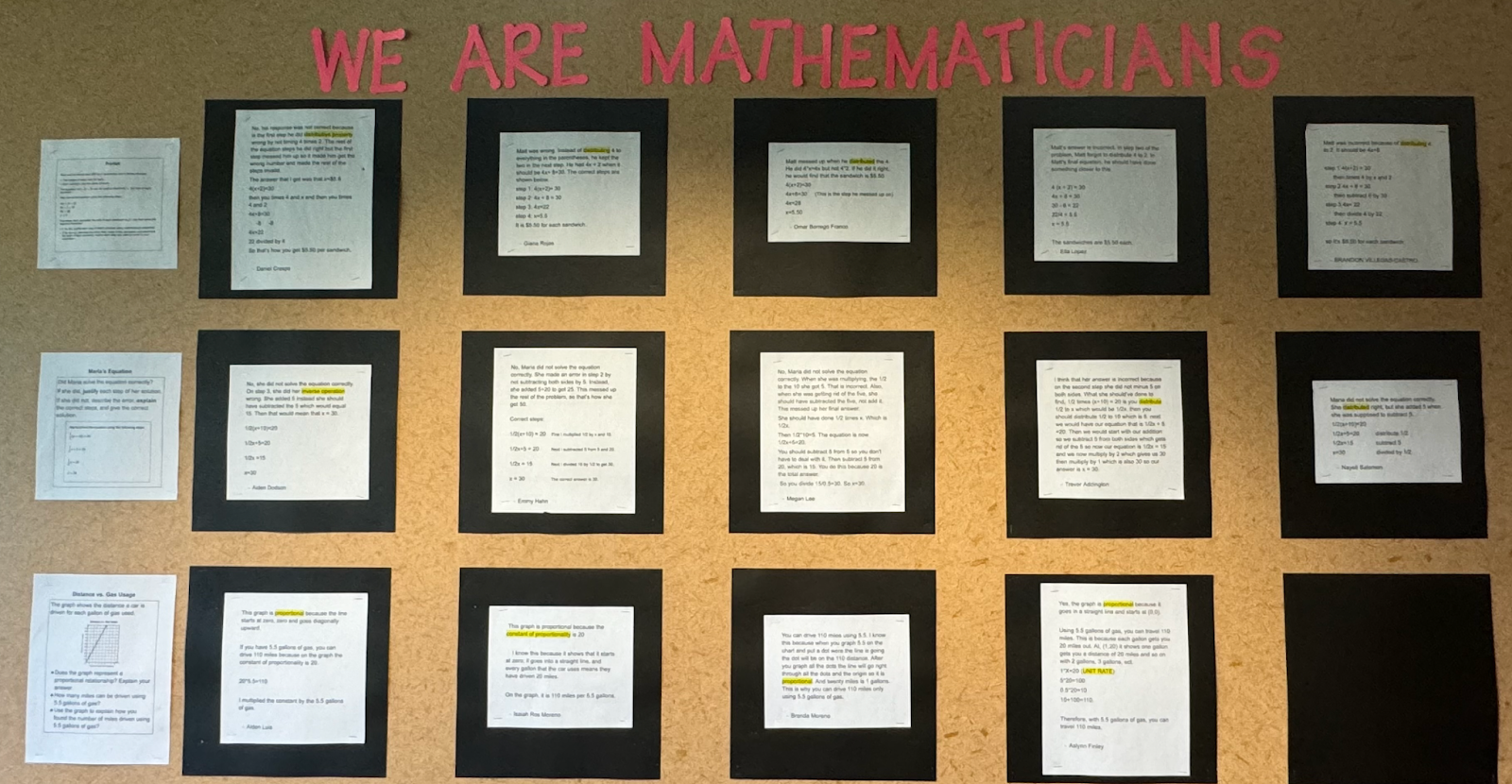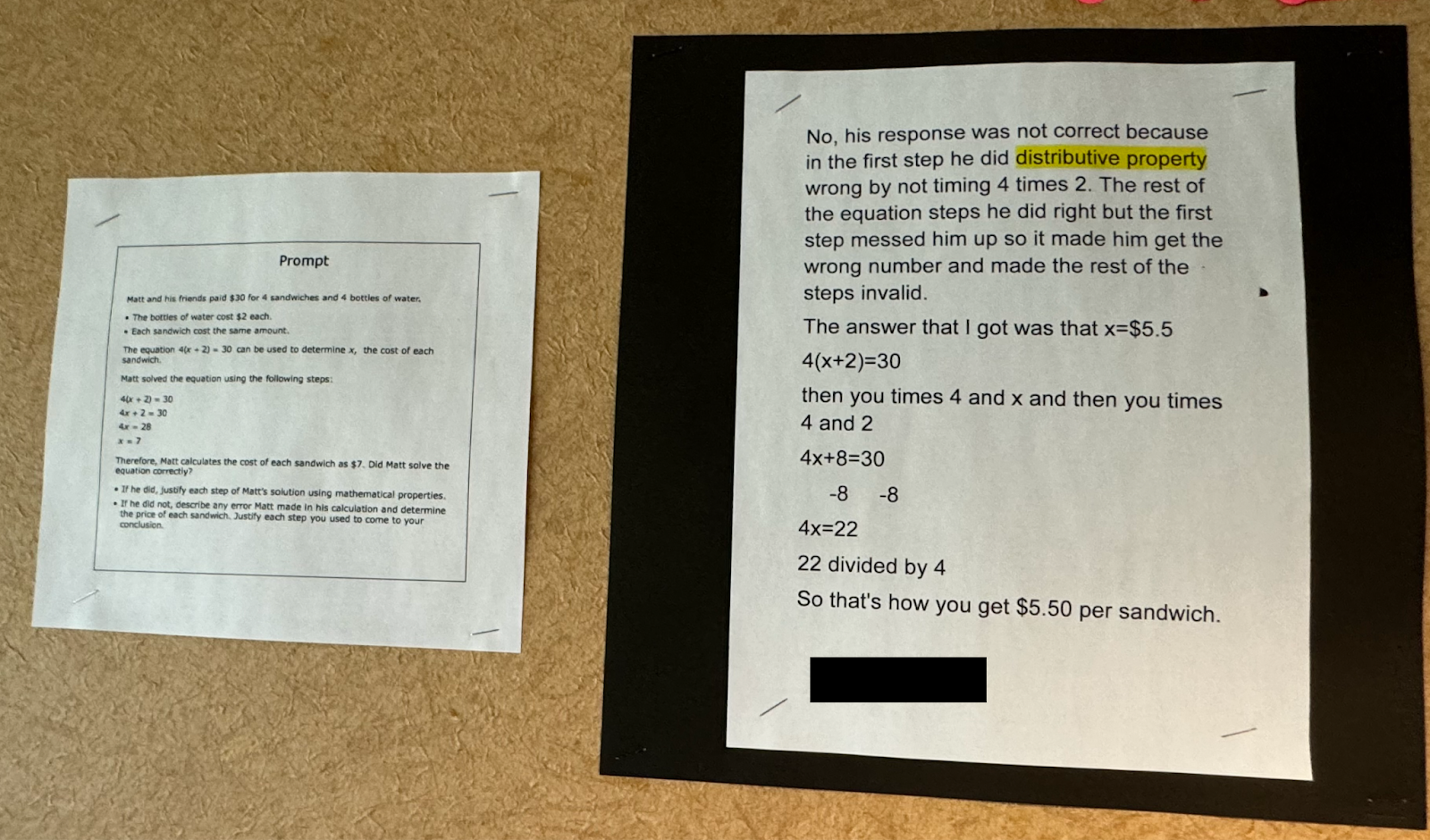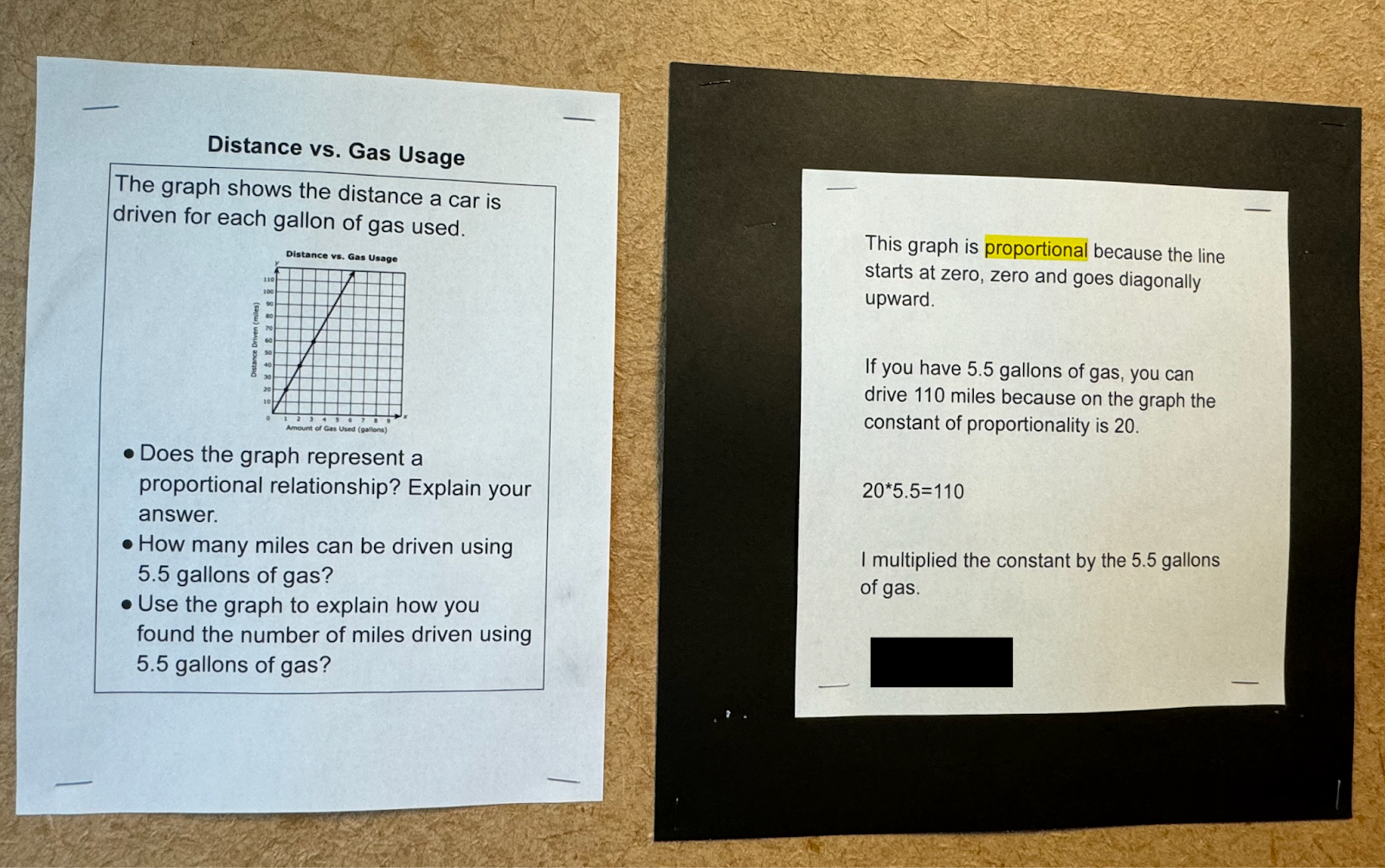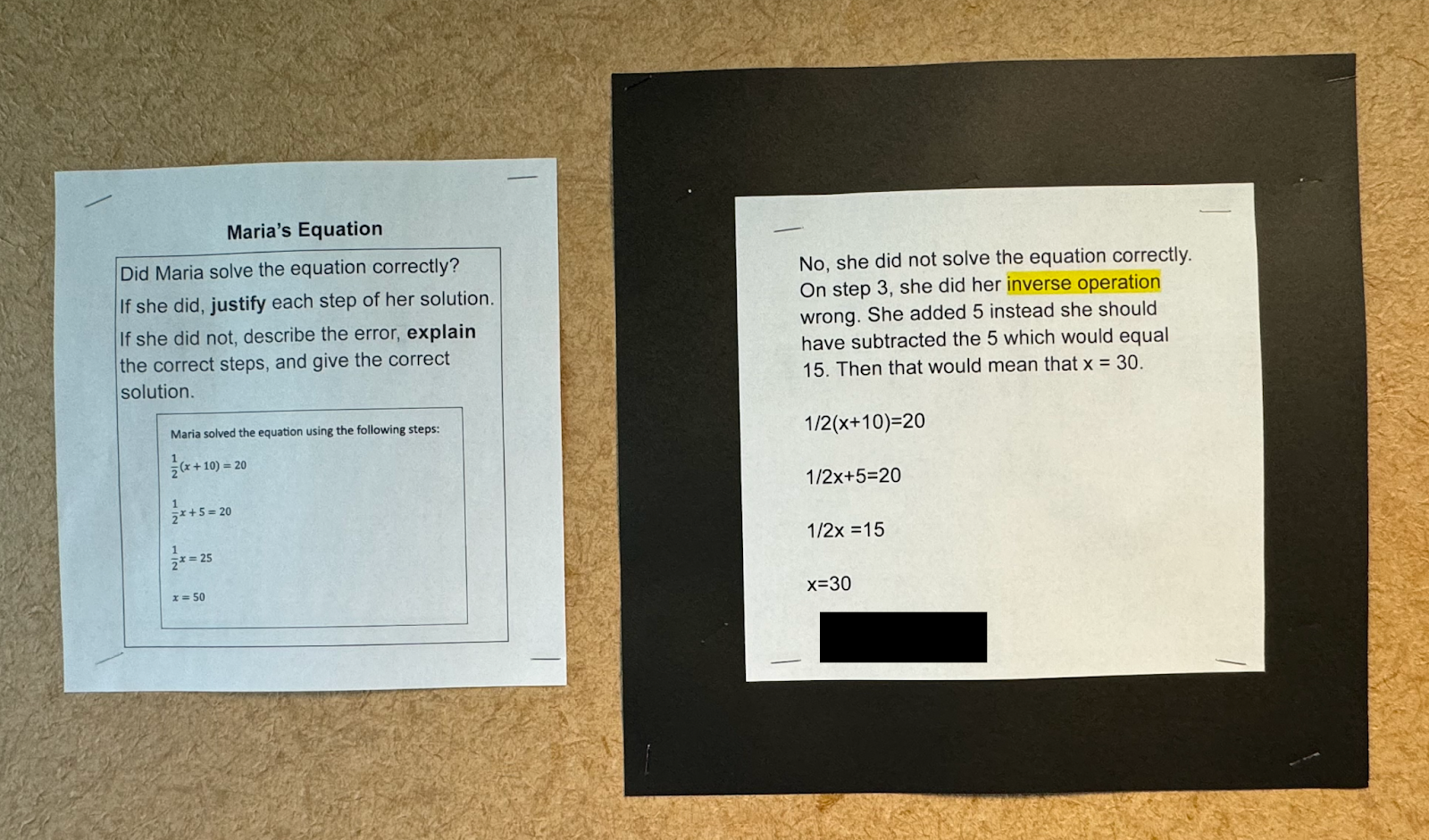By: Tessa Anderson, Math Teacher at Trail Ridge Middle School
You’ve cultivated a community of problem-solvers who repeatedly engage in the eight mathematical practice standards. You’ve developed a classroom that gets students engaged, thinking, and doing the talking. What’s next?
When we prioritize problem-solving discourse, the natural progression of skills is towards mathematical communication through writing. Effective mathematical writing demands precision and is a valuable skill that requires explicit instruction.
At our school, we’ve adopted the CERA writing framework (Claim, Evidence, Reasoning, Audience) to support students writing across contents. In this article, I’ll share teaching strategies that have greatly developed my students’ mathematical writing over the course of the year.
The CERA framework encourages a more analytical writing than a simple restatement and answer of a prompt like other short answer frameworks. And, analytical writing is exactly what we want in math class. However, applying this framework to math differs from other subjects. While the evidence component in other contents comes from text and cited sources, in math, evidence is often self-generated through equations, tables, graphs, etc. We also may be given sets of data or other visual representations to analyze for evidence.
Since students bring in prior knowledge of the framework to math class, we first intentionally make connections to align components of CERA with what we already do. We analyze samples of student writing to identify components. One of my favorite places to get student samples is from past CMAS released items which come with varying levels of student responses: some that receive full credit while others that receive zero. We present samples one at a time to students. As pairs, students annotate these samples to identify the claim, evidence, reasoning, and audience. Sometimes a component is missing! Through whole class discussion we tease out the nuances between the components and acknowledge any overlaps. Sometimes our evidence and reasoning is intertwined. We ask, what makes a good response? What happens to our response when we are missing a component?
We then make rubrics that delineate the qualities and requirements we found through our discussion for different levels of writing: exemplary, proficient, beginning, and insufficient (Figure 1). We emphasize key distinctions between mathematical writing and other subjects, such as the focus on vertical writing or often the requirement of a singular correct answer instead of an array of defensible claims.
To make this rubric concrete, students then rate these responses using the rubric. Pairs are given a whiteboard and then hold up their rating for each component starting with the claim. Each rating is followed by discussion and again, the richness comes out as students debate and defend their rating. We take students through several cycles of this rating, gradually introducing feedback stems for self and peer assessment (Figure 1).
Students then apply these skills by writing their own responses to a prompt. Typically we pose a prompt where the math skills are comfortably within their ability so that this first response allows students to focus on incorporating the CERA components to write an effective argument.
Using the rubric, students then rate themselves. Using a platform like Writable facilitates this process, allowing students to easily provide feedback to each other and allow for continuous revision. Writable also allows us to incorporate the sentence stems students are familiar with. Teacher feedback is integral in this process, and we guide students through multiple cycles of revision until their writing meets the exemplary standards. This iterative process reinforces the mindset that writing is a skill that can be developed with practice and feedback. We also take care to display students’ final product after their hard work (Figure 2).
These lessons occur regularly throughout the school year, with prompts aligned to current topics or intentionally chosen review topics. Starting early in the year lays a strong foundation for developing this practice for students, ensuring they become proficient mathematical writers over time.
This is a year-long process, and with the integration of the CERA framework and consistent feedback opportunities into middle school math across the grade levels, we will be able to create strong, precise, and effective mathematical writers.
Figure 1. Our finalized mathematical CERA rubric with feedback sentence stems.
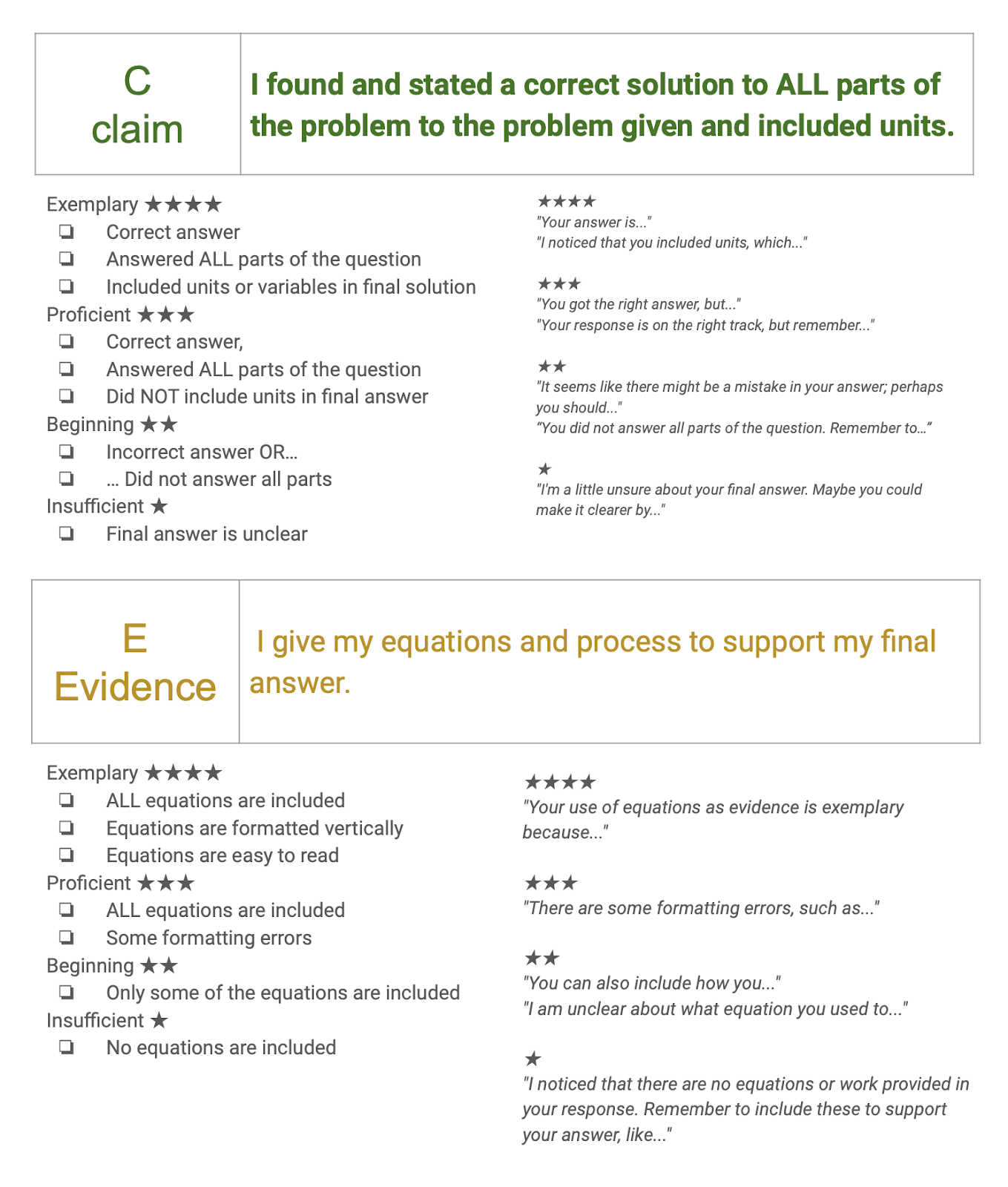
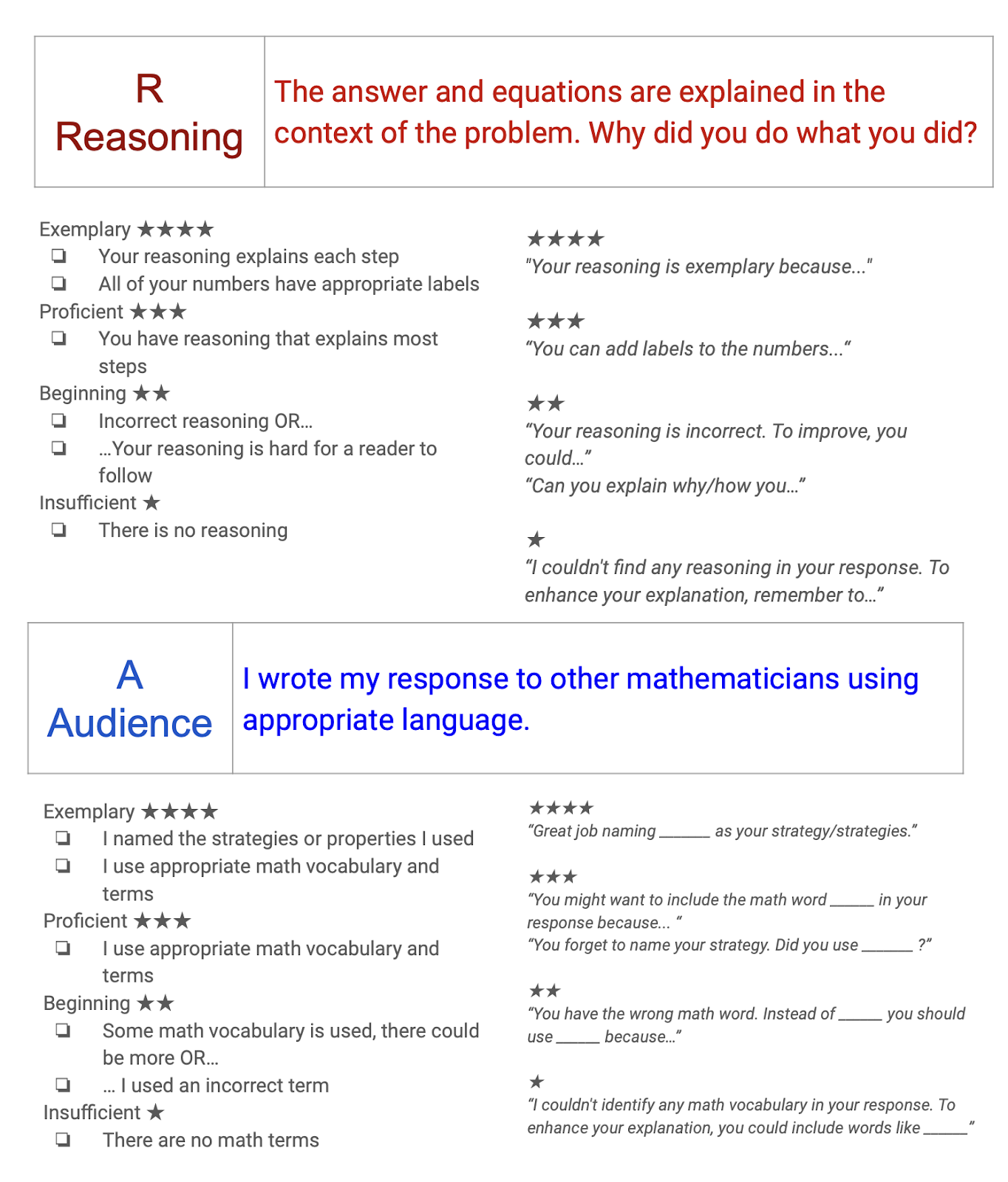
Figure 2. Our display of written responses with close-ups.
